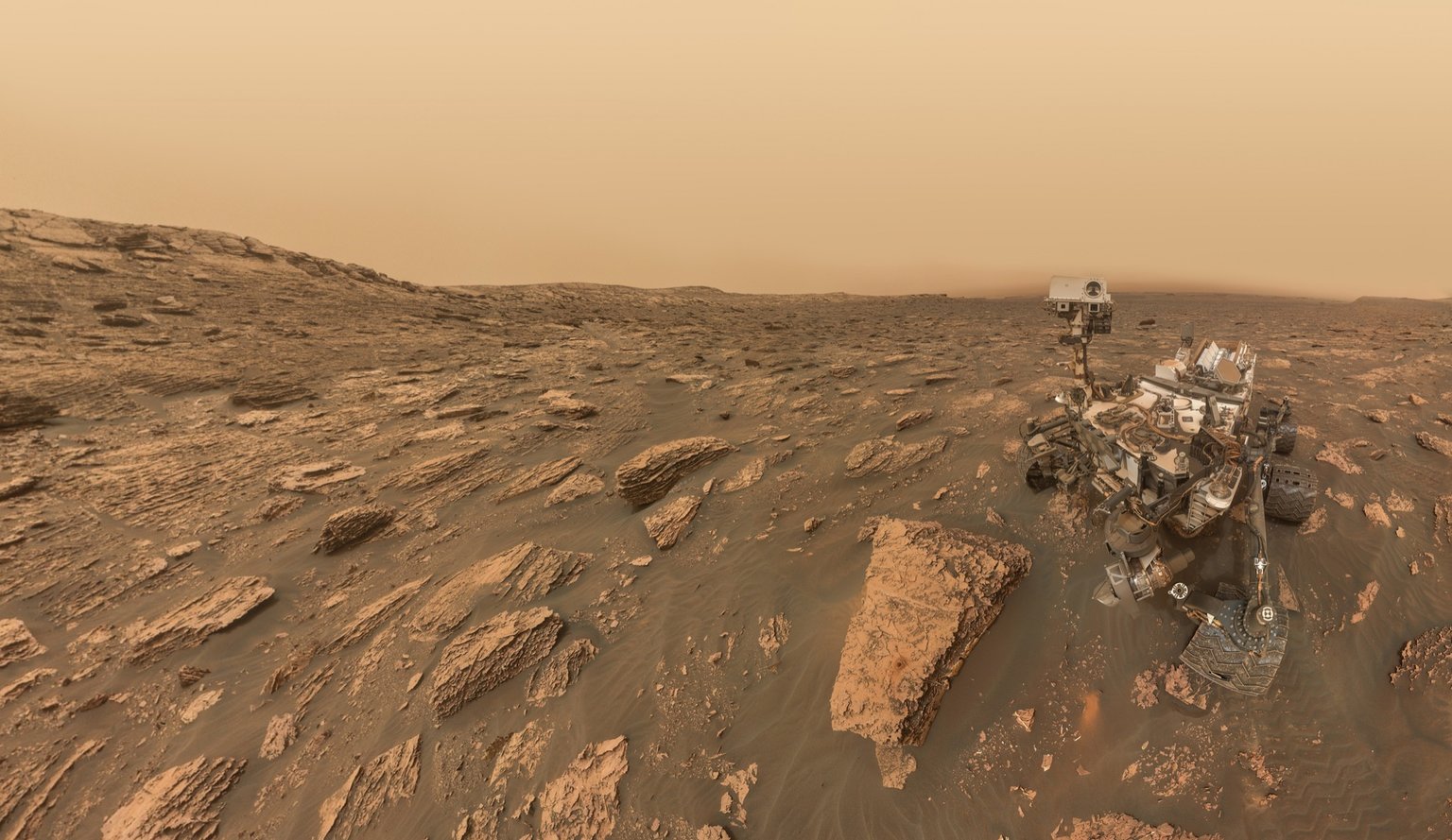While Opportunity’s Mission is in Danger, NASA’s Curiosity Rover Took a Selfie During a Storm on Mars

As a massive dust storm covers a big part of Mars and threatens the mission of NASA’s Opportunity rover, another robot explorer, Curiosity, was able to take a stunning selfie picturing a violent weather event on the Red Planet.
Opportunity rover in danger as the dust storm intensifies
Exploring the surface of Mars since 2004, the Opportunity rover is experiencing the worst storm ever since it has landed on the planet. Considering the fact that the dust blocks most of the sunlight, NASA’s rover is unable to use the solar panels to recharge its battery. Therefore, it is in a serious danger of ending its mission. As Opportunity needs to use some energy to keep its electronics warm, it fell asleep on June 10th to reduce the usage of its energy reserves to minimum in hope of surviving the storm.
Curiosity is well-equipped to cope with the storm
While Opportunity fights to survive through the storm, the other rover exploring the planet, Curiosity, is well-suited to such extreme conditions. Powered by nuclear energy, it doesn’t need sunlight to function. Located halfway around the planet, where the storm is not as dangerous as it is in the area where Opportunity conducts its research, the Curiosity rover took a selfie on Friday during the storm.
Curiosity’s amazing selfie
The picture was taken using the camera located at the end of Curiosity’s arm. Named the Mars Hand Lens Imager, the instrument cannot capture the whole car-sized Curiosity rover, therefore it had to take more than 200 shots, which were later put together to form a single panorama. In the picture we can see not only the rover itself, but also the robot’s surroundings: a small pile of dust, a rock with a hole drilled in it and the storm in the background.
The dust storm could still last for few more weeks, which presents the perfect opportunity for scientists to study Martian weather and the process of dust storm formation. Compared to a similar event in 2007, NASA is now much better prepared, as it has two rovers on the surface of the planet and three satellites orbiting around it. It is essential for us to learn more about the weather conditions on Mars before we decide to send human missions to the Red Planet.
0 comments